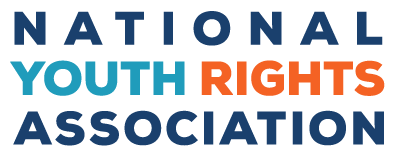Reposted from Free Youth Now with permission from the author.
Youth mental health is a public health crisis. Reports have found that teen suicides are increasing at an alarming pace, outstripping all other age groups. Suicide death rates among young people have increased rapidly in the past decade – becoming the second-most common cause of death among young people, outpaced only by accidents.
For example, in Alaska, the rates of suicide and depression in Alaskan teens have increased significantly in recent years. In 2019, 1 in 5 teens attempted suicide.
1 in 5. I’ll let that sink in. 1 in 5!
How is our society tolerating this? How is it that 1 of every 5 teens believed life is not worth living – and were suffering enough to take the affirmative step to end their lives?
There has been much speculation as to the causes of this national surge in youth suicide – from the prevalence of social media to increased access to firearms.
But this is only part of the story. Mainstream analyses of the causes of the youth suicide problem stubbornly ignore the oppression of youth and the intolerable conditions of being a young person.
Modern society strips young people of their dignity and autonomy, and subjects them to arbitrary and meaningless routines. There is no real sense of agency; almost no freedom to explore passions and find what makes life worth living. It seems obvious that this would create an experience where many young people believe that life is meaningless. Combined with the stress and suffering that many young people experience in schools and at home, and one can imagine why some youth see no other options.
Certainly, the oppression of youth is not the only cause of youth suicide. Traumatic incidents and the adverse experiences faced by many young people are a significant factor in mental health. Also, race and ethnicity play a factor in suicide rates. For example, Alaska Native youth experience disproportionate suicide rates – roughly seven times the national average. Additionally, nationwide population-based surveys of American youth have consistently found rates of suicide attempts reported by LGBTQ+ youth 2-7 times higher than average. This shows that, as always, the liberation of all subordinated groups – not just youth – is needed.
Yet suicide still affects all youth. And dominant institutions may play a major causal role. One disturbing collection of studies has found significant correlations between suicide attempts and the school year. In other words, there is a sharp decline in psychiatric emergencies and suicide in youth during summer and other school vacations; youth suicide rates are highest when youth are in school. Moreover, studies have revealed that teenagers are the most stressed, anxious group of people in America and that 83% of them cite school as a major cause of their stress.
Another seemingly obvious factor in increasing youth suicide – and one that is rarely discussed – is the fact that the future doesn’t appear hopeful. A 2017 Gallup survey found that only 15% of working adults worldwide are engaged in their jobs. Other surveys have found that over 70% of Americans hate their jobs or are completely disengaged. This is a depressing situation. If young people are told their purpose is to become adults – and they look to adults to see how their future will be – it’s understandable that they might despair. And of course, watching adults commit environmental destruction doesn’t help the matter.
There have certainly been attempts to address the problem of youth suicide. These usually take the form of suicide prevention projects. While these are well-meaning efforts that undoubtedly provide much-needed support for some youth, they are focused on treating symptoms. They still completely fail to address the underlying problem of youth suicide: youth are oppressed and therefore many find life meaningless. Any real solutions to the problem need to focus on improving the living conditions of youth.
There is hope and a path forward. Recognizing youth control and autonomy in their lives is a start. Ending violence against youth is another important project.
If we can imagine a world where we work together in partnership with young people; if we could imagine a society where the lives of all people are recognized as valuable, then we would be that much closer to a world worth living in for all.






Nice Website! We should defenetly vote!